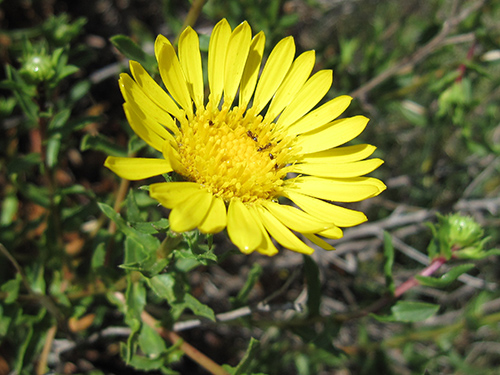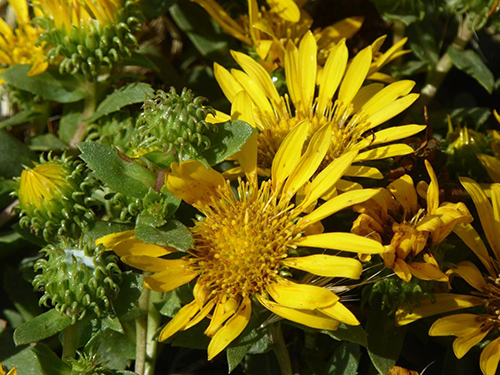Contents
The gum plant contains phenolic and flavonic substances, which give it antispasmodic properties, and saponins, to which it owes its expectorant properties. The resin of the gum plant is formed by terpene acids, among which the most important is grindelic acid, which has antitussive, antispasmodic, and bradycardic properties (slows the heartbeat rate).

The use of the gum plant is recommended for the following:
- Bronchial asthma is caused by its expectorant and antispasmodic effect.
- Acute bronchitis and bronchial catarrh since they soothe the respiratory mucous membrane and promote their regeneration.
- Whooping cough and persistent bronchial cough because of its antitussive properties.
- Heart arrhythmia, especially tachycardia.
WARNING! When taken in high doses, the gum plant has toxic effects and can even produce heart failure.
Gum Plant Scientific Facts

- Other names: August flower, gumweed, resin-weed.
- French: Grindelia.
- Spanish: Grindelia.
- Environment: Native to the northwest American coast, it grows in salty soils and marshes. It is widespread in California.
- Description: This vibrant plant of the Compositae family grows up to 80 cm high. Its flower clusters resemble those of daisies. The stem and leaves are impregnated with sticky resin. The plant has a soothing aroma and mildly sour taste.
- Parts of the plant used medicinally: The flower clusters.
How to use Gum Plant
- Infusion with a teaspoonful of flower clusters per cup of water. The usual dose for adults is three cups a day, and for children, half the adult dose.
- Syrup: It is usually prepared in pharmacies with 5% fluid extract. Drink two or three spoonfuls a day.

Another Gum Plant Species
Besides the species robusta, there is another species of gum plant with the same medicinal properties: Grindelia squarrosa Pursch. Both of them are native to the Pacific coast of North America; however, their interesting properties have made them famous outside the United States, and they can be found in many herb shops worldwide.
DISCLAIMER: All content on this website is presented solely for educational and informational objectives. Do not rely on the information provided as a replacement for advice, diagnosis, or treatment from a qualified medical expert. If you are pregnant, nursing, or have any preexisting medical concerns, talk to your doctor before using any herbal or natural medicines.
REFERENCES
- George D. Pamplona-Roger, M.D. “Encyclopedia of Medicinal Plants.” George D. Pamplona-Roger, M.D. Encyclopedia of Medicinal Plants. Ed. Francesc X. Gelabert. Vols. 1 San Fernando de Henares: Editorial Safeliz, 2000. 310. Print.
- PubMed https://pubmed.ncbi.nlm.nih.gov/
- ScienceDirect https://www.sciencedirect.com/
- Reputable sources such as The American Botanical Council http://abc.herbalgram.org/
- European Medicines Agency https://www.ema.europa.eu/en
